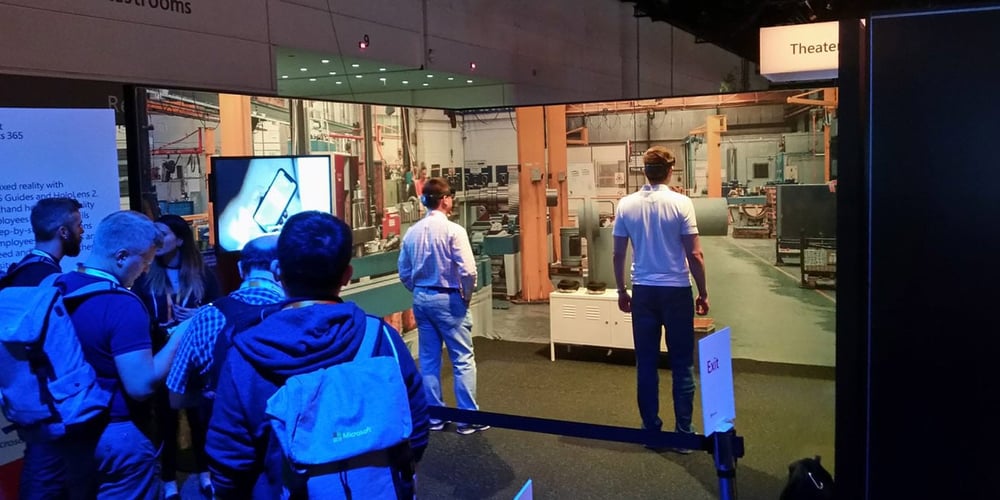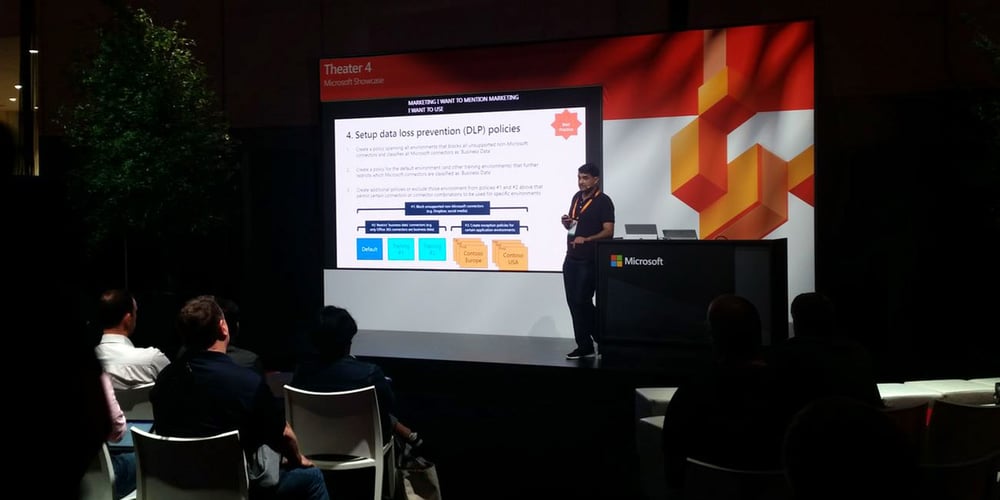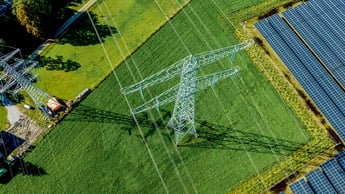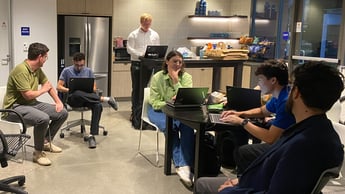Microsoft Ignite: our takeaways (part 2/2)
Last week, I was at Microsoft Ignite. For those of you who missed my first blog post, be sure to check it: Takeaways Microsoft Ignite part 1. The last two days did not have any major announcements, so in this post I will focus mostly on my learnings.

Envisioning Tomorrow Keynote
Software has changed the way we work over the past decades and now AI is starting to redefine software. It can understand speech as well as the world around us and it has become more context-aware over time. This increased AI capability requires an increase in compute, which is hard to meet with current compute solutions. Microsoft is looking for ways to make their data centers more environmentally friendly and energy neutral, while also looking at quantum and optics.
The increase in AI capabilities and compute allows us to make more natural interfaces, bringing tech to more people by using simple commands like speech and gestures. But all this comes with “Digital responsibility”, meaning it should be unbiased and all steps should be traceable.
During the session, the audience was asked to spot leopards in a picture of a landscape. I was amazed that AI could find six, while 40% of the audience could only find four. This, for me, shows how far AI has come over the last few years. Another pillar for AI growth is machine teaching, a learning algorithm instead of brute-forcing.
Some cool demos about the future
Optical storage and its use in networking (as showed by Satya during the keynote); using a prism to route optical signals. Another cool feature of optical is that it apparently can be used for instant Fourier transformations, which can be used to do faster image recognition.
With research into new ways of human-machine interaction, Microsoft hopes to bridge the gap and have humans and machines interact directly, without using screens. For example:
- Projecting sounds from connected devices, like smart plant pots, lamp posts, etc, to the user.
- A wearable in the form of a scarf that changes color based on the air quality around the wearer.
Another field of research is biologic computation: using DNA and cells to do computation. A demo was shown where cell and DNA structures were modeled into a program. Cool stuff, but I don’t expect to see any breakthroughs or commercial grade solutions anytime soon.
Stands
At the show floor there were a lot of company stands. Of course, Microsoft filled a large portion, showcasing their products and services. On the partner floors a couple of familiar names popped up: VictorOps, JFrog, RedHat, Nutanix, NetApp, Cisco, Dell, Logitech, FortiNet, SuSe, to name just a few.
Universal Studios
Everybody who attended got a free pass to go to Universal Studios from 20:30 to 24:00. Free drinks and rides meant people were entertained for the entire night.
Last day
The last day was only half a day, and it was noticeable that a lot of people did already go home or slept in because of the party from the night before.
A session about Azure Data Explorer had three customer success stories; one even claiming 1.5 day for implementation of the entire solution. Note: Kibana is now available for Azure Data Explorer, as well as support for ADLS v2 storage.
For those of you who are familiar with CosmosDB, you know that partitioning can sometimes be a hassle. My takeaways from that session:
- Partition key can be determined by usage scenarios; look at what operations are done on the data. Take the most common operation and optimize for how you query on this field.
- Multi-cardinality is fine. You can use the change feed API to sync other entities on, for example, name changes. This way the same information can be updated in multiple places. This is a small Azure function which takes in the context of the data you are changing, allowing you to write custom code to make the necessary changes.
- De-normalizing for reads could optimize access.
Other note on CosmosDB: Jupiter notebooks are now available inside CosmosDB on cloud (Python).
Some tips on PowerApps:
- New performance monitor capabilities have been introduced in PowerApps.
- Keep user informed with loading and success messages.
- Clutter is the enemy of good design.
- Use Loading.IO for predefined loading animations.
After the last sessions, it was time to head home. I learned a lot in the past week, too much to actually write about. For those interested in all the announcements, you can read the news book (yes a book).
If there is anything you would like to know more about, please let me know. I’ll be happy to answer any questions or point you to the right sessions.







